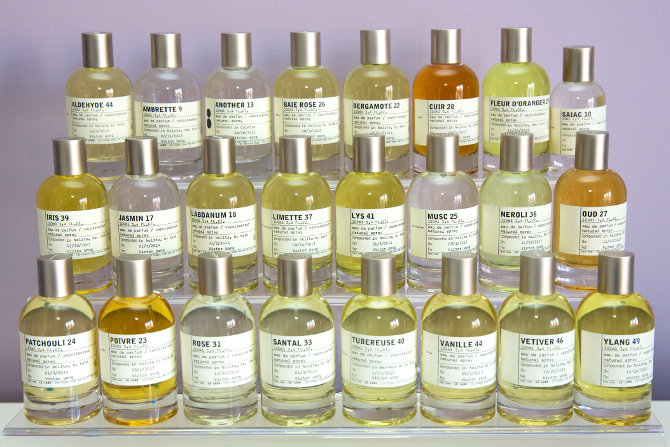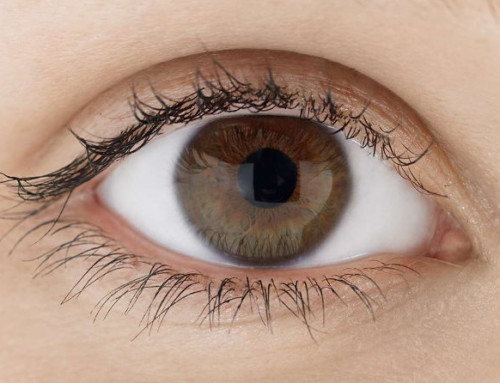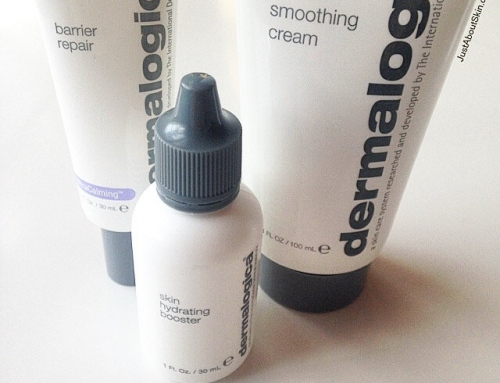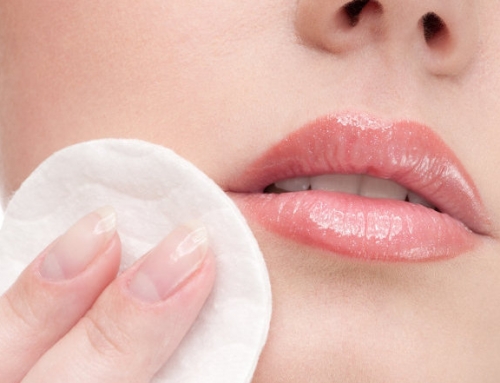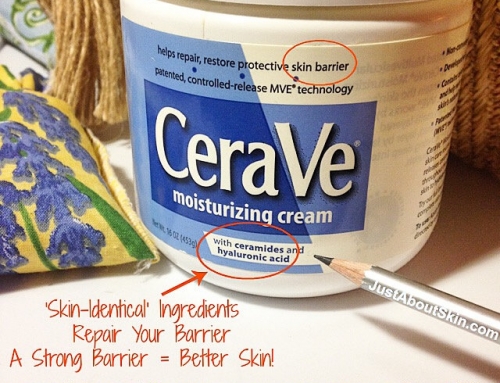Have you ever had a bad reaction to a skin care product? I think most of us can relate to the unpleasant experience of having irritated skin.
In yesterday’s post, I explained the characteristics of the true sensitive skin type. Many people who describe themselves as sensitive are actually sensitized to an irritant. They are not naturally sensitive, which is genetically inherited.
If you develop a reaction to a product or procedure performed on your skin, it is a form of dermatitis.
Dermatitis is a general term for an inflammatory skin condition or disorder.
Allergic reactions are a form of dermatitis.
Let’s briefly look at the most common forms of dermatitis.
A). ATOPIC DERMATITIS
Atopic dermatitis is the genetic form of eczema, which affects about 10-20% of people worldwide. Eczema is a chronic, long-lasting form of dermatitis.
Common symptoms are dry, scaly patches of skin that can itch. Severe eczema can be very painful (for instance, when there are fissures in the skin).
Eczema typically affects the elbows, backs of knees, hands, face, and sometimes the entire body.
B). CONTACT DERMATITIS
Contact dermatitis is caused by contact with a substance. There are two types of it: Allergic Contact Dermatitis and Irritant Contact Dermatitis.
1. Allergic Contact Dermatitis
Allergic Contact Dermatitis is a true allergy to something.
The symptoms of an allergic reaction are probably familiar to you – redness, swelling, hives, itching, and warm skin.
The immune system launches an allergic reaction, which occurs within 6-48 hours after contact. It normally occurs after you ingest or inhale something, but can also occur from something topical (direct contact with skin).
This kind of dermatitis is due to prior exposure to a trigger. Often, it is due to repeated exposure to that trigger over time.
It can take months or years for an allergy to manifest. For example, you may eat seafood, use perfume, or wear jewelry for years with no problem. Then one day suddenly develop a full blown allergic reaction to one of these substances.
When you have Allergic Contact Dermatitis, you react the same way if you are exposed to that trigger again later.
Common Sources of Allergic Reactions:
- skin care products
- cosmetics
- fragrance
- preservatives
- detergents
- dyes and colorants (e.g red)
- fabrics
- jewelry (e.g. nickel)
- plants (e.g. poison ivy)
- seafood
- peanuts
The #1 allergen in cosmetic products is fragrance.
2. Irritant Contact Dermatitis
Irritant Contact Dermatitis occurs after exposure to an irritant. An example of an irritant is a caustic chemical, but it can be anything (the same things that can cause allergies).
The symptoms of this reaction include redness, stinging, itchiness, swelling, or even a chemical burn.
The reaction occurs immediately (within the first hour), and it is localized (where the skin was exposed to the irritant, not a body-wide reaction).
The reaction subsides after the irritant has been removed. Skin becomes dry, flaky, scaly, and cracked. Irritant Contact Dermatitis goes away after the skin has repaired itself (unless there is continued exposure to the irritant).
Irritant Contact Dermatitis is known as a sensitized reaction. It is not an allergic reaction because the immune system is NOT involved.
Common Irritants:
Common irritants are the same as the sources of allergic reactions (above), except not food allergies like seafood or peanuts.
So how do you know which kind of dermatitis you have?
- If you react right away (immediately) to a product after applying it, it is Irritant Contact Dermatitis.
- If you react a few hours to 2 days later, it is most likely Allergic Contact Dermatitis.
SENSITIVITY TO PRODUCTS
Irritation from skin care products is common. What can make some products irritating?
- Some cosmetic ingredients, such as sulfates or SD alcohol (large amount) are just harsh.
- Many plant-based (botanical) ingredients are sensitizing.
- A low or high pH product also irritates skin by disrupting the skin’s natural pH balance.
Here is a list of potentially irritating ingredients.
Related Articles:
- Types of Sensitive Skin
- How to Care For Sensitive Skin
- 10 Tips for Sensitive Skin
- How to Repair Irritated Skin
Want articles delivered straight to your inbox? Sign up for the weekly newsletter here.

